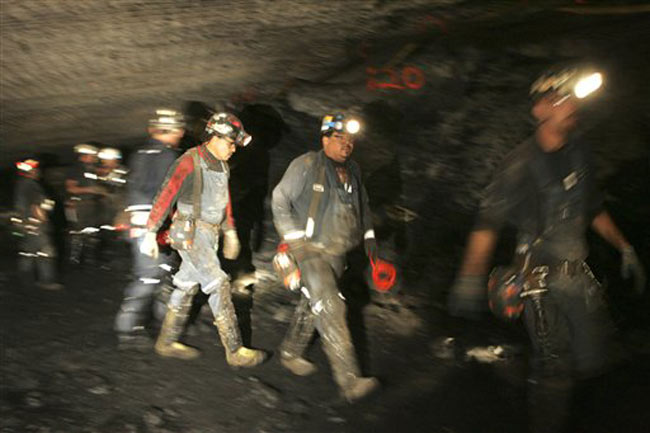Why Do Coal Mines Explode?

The cause of the massive explosion that killed at least 25 miners in West Virginia yesterday remains unknown. But officials think methane gas likely contributed to the fatal blast at Massey Energy Co.'s Upper Big Branch mine.
There are two main types of coal mine explosions: methane explosions and coal dust explosions.
Methane explosions occur in mines when a buildup of methane gas, a byproduct of coal, comes into contact with a heat source, and there is not enough air to dilute the gas to levels below its explosion point, said Yi Luo, an associate professor of mining engineering at West Virginia University.
"In most U.S. coal mines, each ton of coal contains between 100 to 600 cubic feet (2.83 to 17 cubic meters) of methane," Luo told Life's Little Mysteries. "When air contains 5 percent to 15 percent of methane, it can explode."
Deadly mix
Methane, the main component of natural gas, is combustible, and mixtures of about 5 percent to 15 percent in air are explosive. When air contains approximately 9.5 percent of methane (the most dangerous concentration), it reaches the perfect oxidation point, which means that the right amount of fuel is mixing with the right amount of oxygen, said Luo. This produces water, carbon dioxide and a lot of amount of heat.
"It does not [require] much heat to ignite the combustion process and therefore methane explosion can accelerate very fast," Luo said.
Get the world’s most fascinating discoveries delivered straight to your inbox.
The heat generated by this process raises the temperature of the air within the mine, which causes it to expand in volume. Since hot air cannot expand easily underground, pressure builds in the mine. If this pressure is high enough, it can cause the air ahead of the combustion zone to compress and cause a shock wave, Luo explained.
Ventilation is the most common method to avoid such methane explosions in coal mines. Large fans are used to blow air out or draw air into mines, but Luo stated that mine ventilation is still a complicated science.
"In coal mines, we are required to control the concentration [of methane to] less than 1 percent," he said. "But there are hard places to ventilate where concentration could get into the explosive range."
Mine explosions can also be triggered when fine particles of coal dust come into contact with a source of heat.
While methane is easier to ignite, the explosion pressure and heat value of methane is not as high as coal dust. In most cases, dust explosions are first caused by methane explosions, said Luo.
"Dust explosion needs a very high concentration of dust suspended in the air, which is very hard to find in a mine environment," Luo explained.
But, the shock wave caused by methane explosions can blow up coal dust within the mine, and the heat generated by the methane reaction can ignite the dust, which greatly intensifies the energy of the explosion.
Worst case
So, in a worst case scenario, a methane explosion has the potential to ignite a more catastrophic coal dust explosion.
Coal mines in the United States have taken safety measures to avoid dust explosions, including spreading limestone powder over the coal dust. Limestone powder makes it more difficult for shock waves from methane explosions to blow up particles of coal dust, said Luo.
"Limestone also absorbs a great amount of heat generated from the [methane] explosion," Luo said. "It will either stop the chain reaction or reduce the intensity of the explosion."
The Massey Energy Co. explosion this week is the worst mining disaster in the United States in more than two decades, and this latest catastrophe adds to a long history of coal mine tragedies in an industry that is notoriously risky and dangerous.
Since 1839, there have been 501 known U.S. coal mine explosions that killed at least five people each, according to the National Institute for Occupational Safety and Health. In addition, at least 52 coal mine fires have killed at least five people each. The worst of these disasters was an explosion that killed 362 people in a coal mine in Monongah, W.Va in 1907.
An explosion similar to this week's occurred at Sago Mine in Buckhannon, W.Va in 2006 that killed 12 miners.
- What Are the Most Dangerous Jobs
- Natural Disasters: Top 10 U.S. Threats
- The Greatest Explosions Ever

Denise Chow was the assistant managing editor at Live Science before moving to NBC News as a science reporter, where she focuses on general science and climate change. Before joining the Live Science team in 2013, she spent two years as a staff writer for Space.com, writing about rocket launches and covering NASA's final three space shuttle missions. A Canadian transplant, Denise has a bachelor's degree from the University of Toronto, and a master's degree in journalism from New York University.


